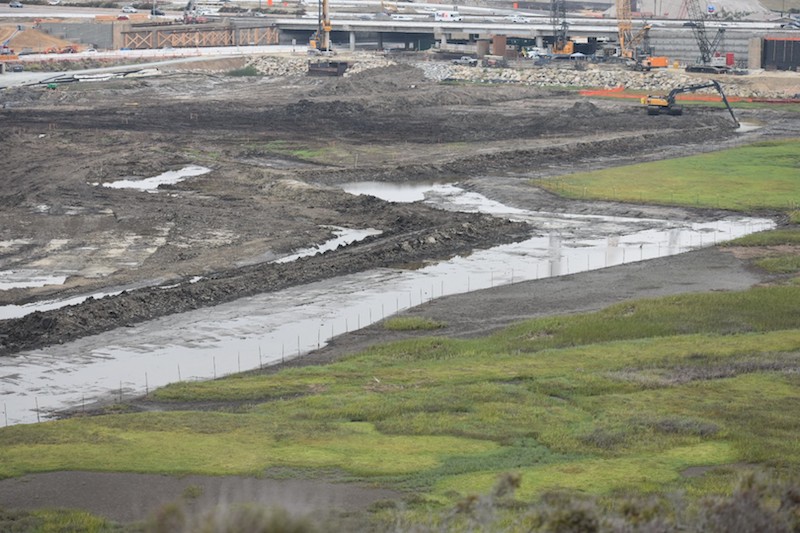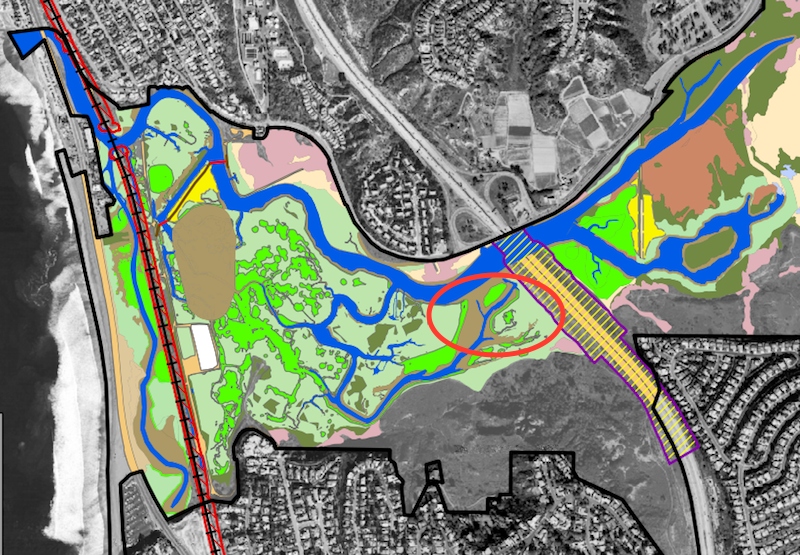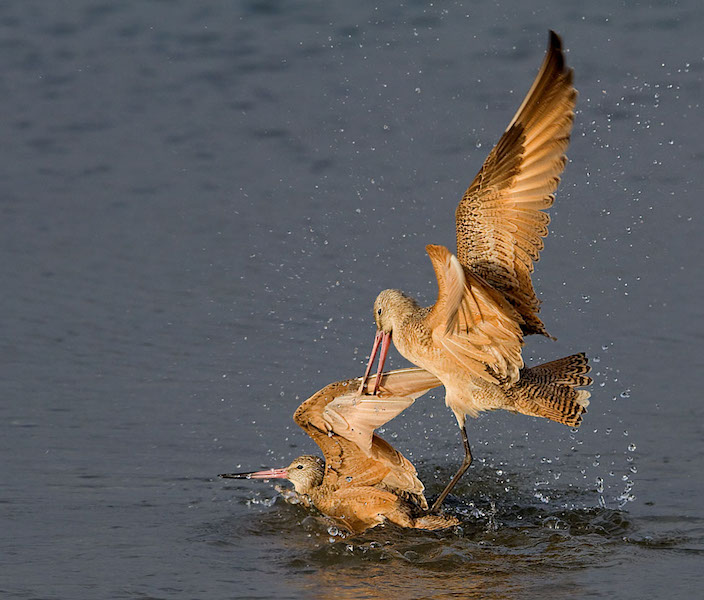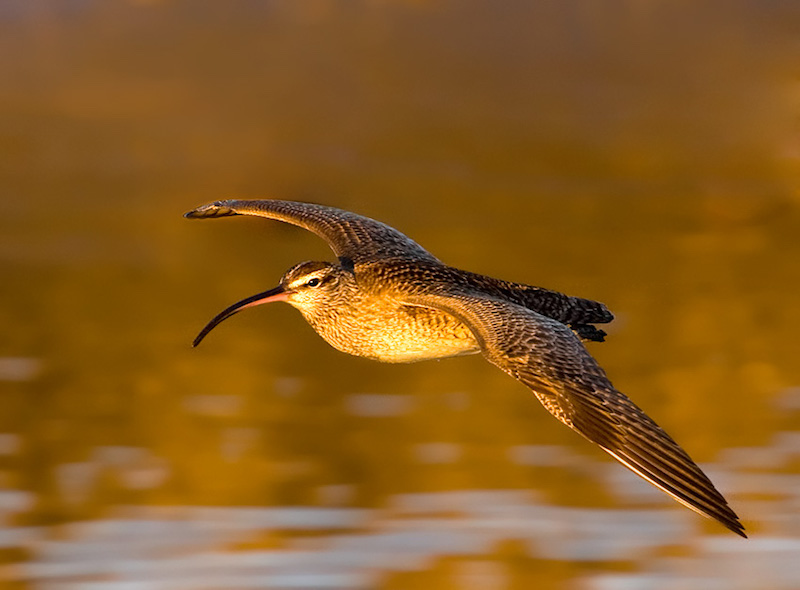Championing Restoration: Hero Spotlight, Joshua Rey
Follow ( 0 Followers ) X Follow E-mail : * Follow Unfollow

Building Mudflats
Close to Interstate-5 in the Central basin, you are seeing the beginning of construction to enhance mudflat habitat. When sea level rise occurs in coming decades, critical salt marsh and mudflat habitats will be sustained.

Above: A view of the enhancement for mudflats in the Central basin. The excavator shown is sculpting channels for the creation of these habitats.

The circle shows the area near I-5 that currently has multiple excavators creating mudflats (mudflats noted in brown).
Areas of Central Basin will be higher than they are now. As seawater rises, subtidal and intertidal species will move upward into these areas.
Mudflats are Essential in Our Estuary
A rising tide first covers the mudflats and eventually may cover the pickleweed and part of the cordgrass. These plants can survive being submerged by salt water to some degree every day.
As the tide ebbs, you can see large areas of pickleweed emerge. Mudflats become exposed. They are rich with burrowing invertebrates, an important food source for many birds and other animals, many of which float into the lagoon with the high tides.

The Marbled Godwit (above) is one of the tallest hunters along the mudflats in winter. They forage on plant tubers in shallow waters during migration, using their upturned bill to clip. Photo by Chris Mayne
We have built resiliency into this restoration plan based on stakeholder experts’ best estimate of the likely range of seawater rise over the next 50 years. We have provided stepping stones for species.

The Whimbrel hunts on the mudflats at low tide in winter, primarily eating marine invertebrates, especially small crabs. One of the greatest current threats to this species is loss of coastal wetland habitat. Photo by Chris Mayne

If it gets too dry on the mudflats, horn snails simply seal their doors and wait for higher tide.
In coming seasons, you will see a lot of work for improvements as we work efficiently to get in and get out. We are looking forward to watching more birds, touring on new trail connections, and feeling good that San Elijo Lagoon will thrive now and in the future.
Have a question? Leave us a comment on this post. Your thoughts can help us provide you with more information in Lagoon Connections.
Follow ( 0 Followers ) X Follow E-mail : * Follow Unfollow
Follow ( 0 Followers ) X Follow E-mail : * Follow Unfollow